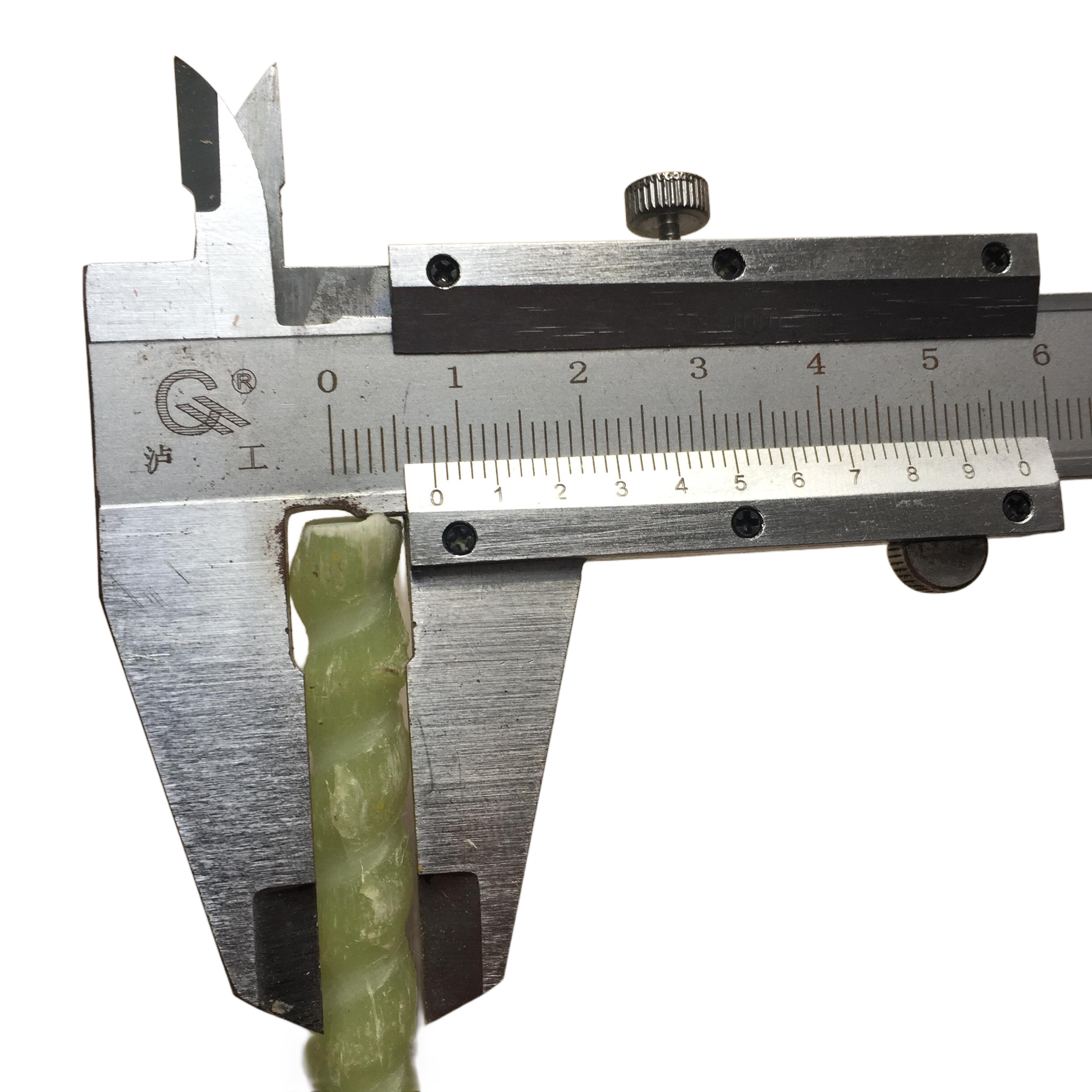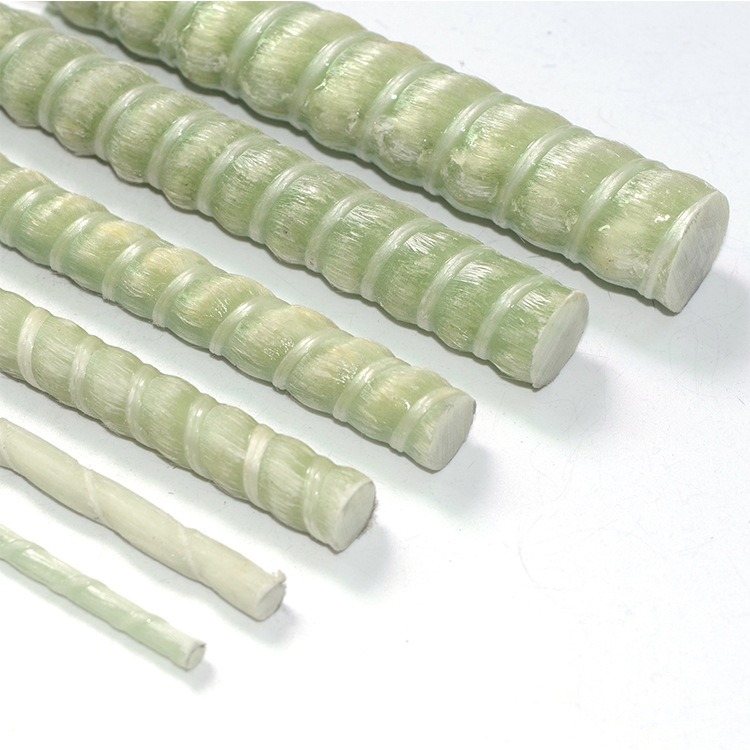Introduction
In the ever-evolving field of construction and civil engineering, the quest for materials that offer enhanced durability, reduced maintenance costs, and improved performance is relentless. Traditional steel rebar has long been the standard for reinforcing concrete structures, but it is not without its drawbacks, particularly in environments prone to corrosion. Enter Fiberglass Rebar, a composite material that is reshaping the way engineers approach structural reinforcement. This article delves into the myriad applications of fiberglass rebar, exploring where and why it can be used to achieve superior results.
Understanding Fiberglass Rebar
Fiberglass rebar, also known as Glass Fiber Reinforced Polymer (GFRP) rebar, is a composite material made from high-strength glass fibers and a durable resin matrix. This combination results in a reinforcement bar that is strong, lightweight, and resistant to corrosion. Unlike traditional steel rebar, fiberglass rebar does not rust or corrode when exposed to harsh environmental conditions, making it an ideal choice for structures that are subjected to moisture, chemicals, or extreme temperatures.
Advantages of Fiberglass Rebar
Before exploring the specific applications of fiberglass rebar, it's essential to understand the inherent advantages that make it a superior alternative to steel in many scenarios. These benefits include:
Corrosion Resistance
One of the most significant advantages of fiberglass rebar is its exceptional resistance to corrosion. Steel rebar is susceptible to rust when exposed to moisture and chlorides, which can lead to structural weakening over time. Fiberglass rebar, however, remains unaffected by these elements, ensuring the longevity and integrity of the reinforced structure.
Lightweight and High Strength
Fiberglass rebar is approximately one-quarter the weight of steel rebar, making it easier to handle and install. Despite its lighter weight, it offers high tensile strength, providing robust reinforcement where needed. This combination of lightness and strength can lead to faster construction times and reduced labor costs.
Non-Conductive and Non-Magnetic
Unlike steel, fiberglass rebar does not conduct electricity or interfere with magnetic fields. This property makes it suitable for use in structures where electromagnetic neutrality is crucial, such as hospitals, research facilities, and certain industrial environments.
Thermal Insulation
Fiberglass rebar has low thermal conductivity, which helps in reducing thermal bridging in concrete structures. This property enhances the energy efficiency of buildings, contributing to better insulation and lower energy costs over the life of the structure.
Applications of Fiberglass Rebar
Given its unique properties, fiberglass rebar is suitable for a wide range of applications. Below are detailed insights into where fiberglass rebar can be effectively utilized to maximize structural performance and longevity.
Marine Structures
Marine environments are highly corrosive due to the presence of saltwater, which accelerates the deterioration of steel reinforcements. Fiberglass rebar's resistance to corrosion makes it ideal for use in docks, seawalls, jetties, and offshore platforms. Its durability in such harsh conditions ensures the structural integrity of marine constructions over extended periods, reducing maintenance costs and downtime.
For example, the rehabilitation of the Pier 57 in Seattle utilized fiberglass rebar to enhance the lifespan of the structure. Engineers reported a significant reduction in maintenance requirements, attributing it to the non-corrosive nature of the material.
Bridges and Highway Infrastructure
Bridges and highway structures are exposed to de-icing salts, moisture, and fluctuating temperatures, all of which contribute to the corrosion of steel rebar. Fiberglass rebar mitigates these issues due to its inherent corrosion resistance. Its application in bridge decks, barrier walls, and pavements extends the service life of these structures.
The Goldstream River Bridge in British Columbia is a notable project where fiberglass rebar was used extensively. The decision was based on life-cycle cost analysis, which demonstrated long-term savings by eliminating corrosion-related repairs.
Tunneling and Mining Operations
In tunneling and mining, temporary support structures often need to be cut through as excavation progresses. Fiberglass rebar offers a practical solution because it does not damage cutting equipment like steel rebar does. Additionally, its non-sparking characteristics enhance safety in environments where combustible gases may be present.
The use of fiberglass rebar in the construction of the Gotthard Base Tunnel in Switzerland, the world's longest railway tunnel, exemplifies its effectiveness. Engineers successfully reduced equipment wear and improved overall safety during construction.
Electrical and Magnetic Facilities
Facilities that house sensitive electronic equipment, such as MRI rooms in hospitals or research laboratories, require non-magnetic and non-conductive materials to prevent interference. Fiberglass rebar meets these requirements, making it the preferred choice over steel rebar in such settings.
The National Institutes of Health incorporated fiberglass rebar in their clinical center to ensure the proper functioning of advanced imaging equipment. The material's properties provided a stable environment free from electromagnetic interference.
Industrial and Chemical Facilities
Industries that involve the use of chemicals, acids, or other corrosive substances benefit from the application of fiberglass rebar. Storage tanks, containment areas, and flooring systems reinforced with fiberglass rebar resist chemical attack, ensuring structural integrity and preventing environmental contamination.
In a petrochemical plant in Texas, fiberglass rebar was used in the construction of containment basins. The material's resistance to the aggressive chemicals handled at the facility has prevented structural degradation, ensuring compliance with environmental regulations.
Retaining Walls and Foundations
Retaining walls and foundations are susceptible to moisture and soil-induced corrosion. By using fiberglass rebar, these structures gain enhanced durability and longevity. The material's lightweight nature also simplifies the construction process, particularly in challenging terrains or limited-access sites.
A residential development in California employed fiberglass rebar for hillside retaining walls. The project saw improved construction efficiency and reduced long-term maintenance concerns associated with traditional steel reinforcement.
Airport Runways and Taxiways
Airports require materials that do not interfere with navigation and communication systems. Fiberglass rebar's non-conductive properties prevent signal distortion, making it ideal for runways, taxiways, and aprons. Additionally, its corrosion resistance reduces repair-related disruptions to airport operations.
The Chicago O'Hare International Airport integrated fiberglass rebar in the construction of a new runway. The use of this material contributed to enhanced performance and reliability of critical airport infrastructure.
Cold Storage and Refrigeration Facilities
In cold storage facilities, thermal bridging can lead to energy inefficiency and condensation issues. Fiberglass rebar's low thermal conductivity minimizes these problems, maintaining temperature control and reducing energy consumption. Its application in floor slabs and walls supports the stringent thermal requirements of these facilities.
A major food distribution center in Minnesota utilized fiberglass rebar to meet its high-performance insulation needs, resulting in consistent temperature maintenance and lower operational costs.
Design Considerations and Standards
When implementing fiberglass rebar in construction projects, engineers must consider specific design factors due to the material's different mechanical properties compared to steel. The lower modulus of elasticity, for instance, necessitates adjustments in deflection calculations and crack control measures. Adherence to established standards, such as the American Concrete Institute's ACI 440.1R-15 Guide for the Design and Construction of Structural Concrete Reinforced with Fiber-Reinforced Polymer Bars, ensures proper application and safety.
Additionally, collaboration with manufacturers can provide valuable insights into the material's capabilities and limitations. Access to technical data sheets and testing results supports informed decision-making throughout the design process.
Installation Practices
Installing fiberglass rebar requires attention to handling and placement techniques to maintain its structural integrity. The material should be cut using carbide or diamond-coated blades to avoid fraying. Bends and shapes must be factory-made, as field bending is not feasible with fiberglass rebar. Proper training of construction personnel ensures that the unique characteristics of fiberglass rebar are accommodated during installation.
Safety considerations include using appropriate personal protective equipment (PPE) to prevent skin irritation from glass fibers during handling. Moreover, clear communication between design engineers, contractors, and installers promotes adherence to best practices.
Economic Considerations
While the upfront cost of fiberglass rebar may be higher than that of steel, the long-term economic benefits often outweigh the initial investment. Reduced maintenance and repair costs, extended service life, and minimized downtime contribute to overall savings. Life-cycle cost analyses demonstrate that fiberglass rebar can be a cost-effective solution, particularly in structures exposed to corrosive environments.
For instance, a study comparing the total costs of a seawall constructed with fiberglass rebar versus steel rebar revealed a 25% reduction in life-cycle costs when using fiberglass rebar. These savings stemmed from fewer repairs and extended intervals between maintenance activities.
Environmental Impact
Fiberglass rebar contributes to sustainable construction practices. Its corrosion resistance reduces the need for chemical treatments and coatings often required for steel rebar. Additionally, the material's longevity and durability decrease the consumption of raw materials over time. Some manufacturers are also exploring the use of recycled materials in the production of fiberglass rebar, further enhancing its environmental credentials.
The use of fiberglass rebar aligns with green building certifications and standards, supporting the development of eco-friendly structures that meet modern sustainability goals.
Future Trends and Developments
Ongoing research and technological advancements continue to expand the potential applications of fiberglass rebar. Innovations in resin formulations and fiber technologies are enhancing the material's strength and durability. As acceptance within industry standards grows, it's anticipated that fiberglass rebar will become a mainstream reinforcement material across various sectors.
Collaborative efforts between academia, industry professionals, and manufacturers aim to address challenges and optimize the use of fiberglass rebar. These initiatives include developing standardized design methodologies and expanding educational resources for engineers and contractors.
Conclusion
Fiberglass rebar presents a compelling alternative to traditional steel reinforcement, especially in environments where corrosion resistance, non-conductivity, and lightweight materials are advantageous. Its diverse applications span marine structures, bridges, industrial facilities, and beyond. By incorporating Fiberglass Rebar, engineers and builders can enhance the durability and performance of structures, ultimately leading to safer and more sustainable construction practices.
The continued adoption of fiberglass rebar is supported by a growing body of research, successful case studies, and evolving industry standards. As the construction industry moves toward more resilient and environmentally responsible materials, fiberglass rebar is poised to play a significant role in shaping the future of structural reinforcement.




























